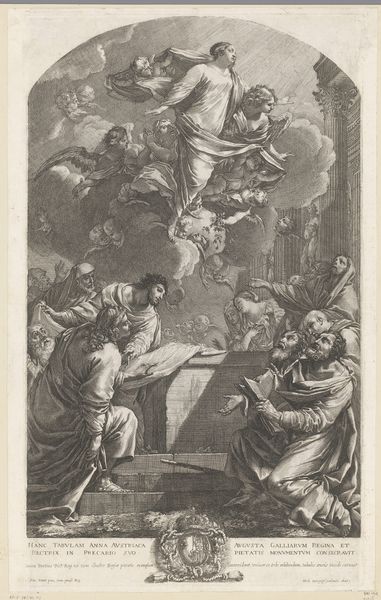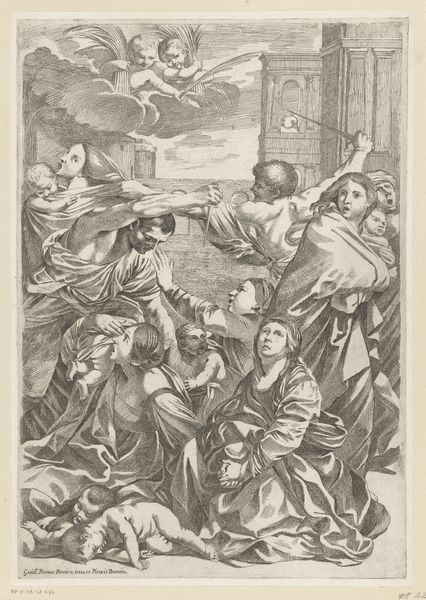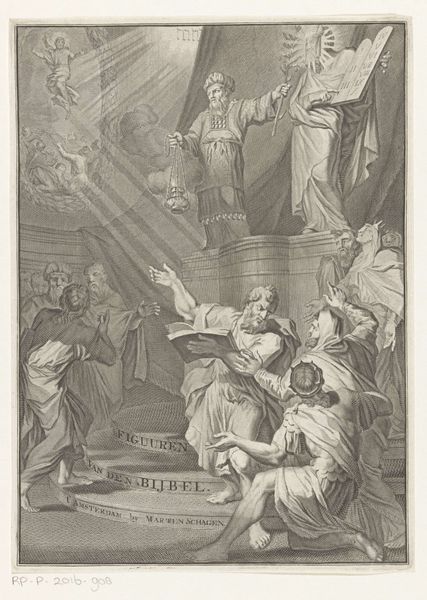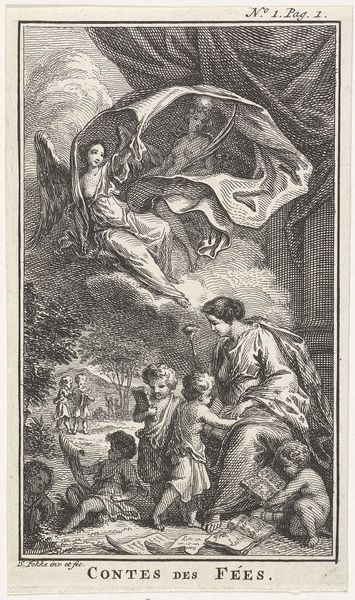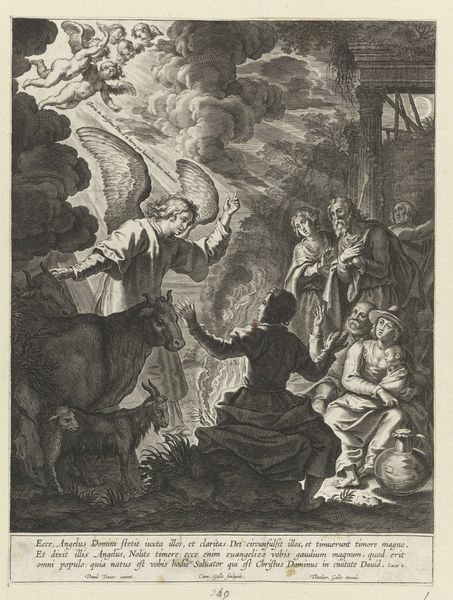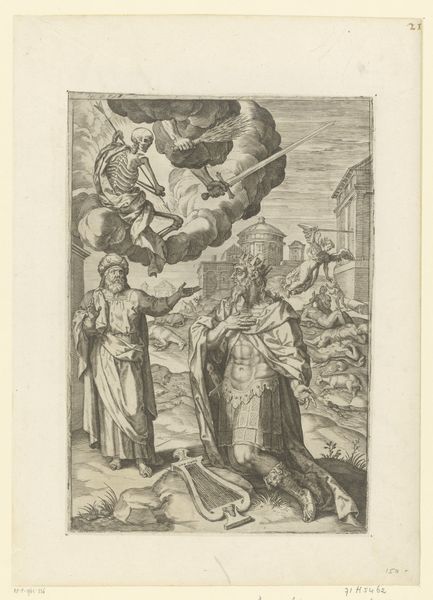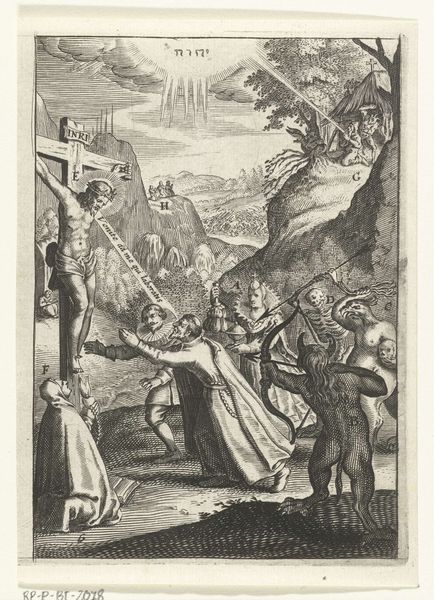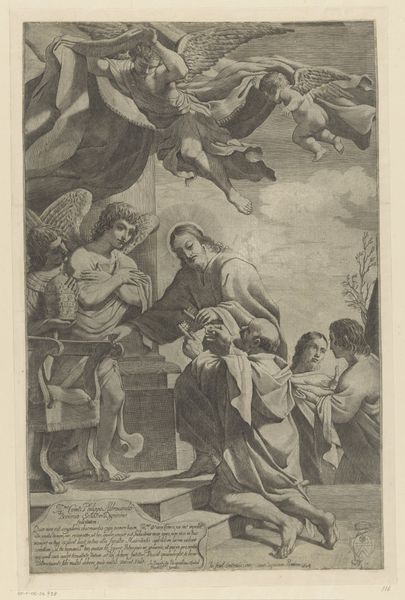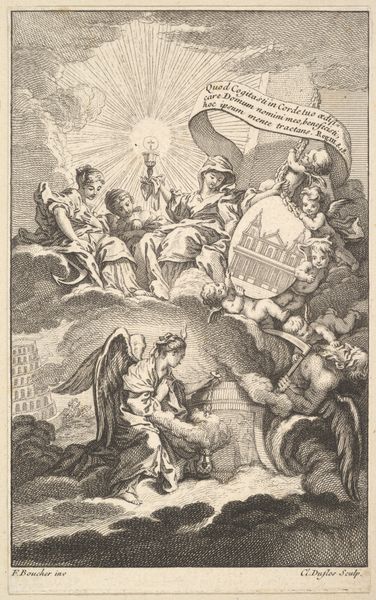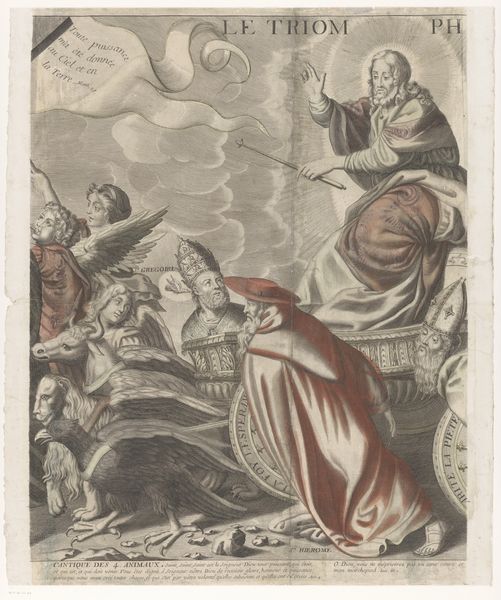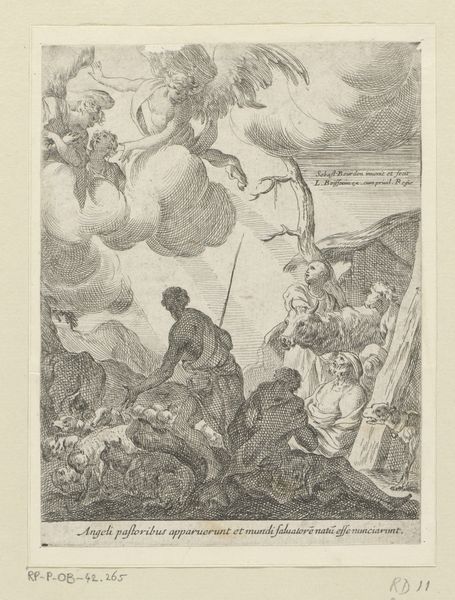
engraving
#
baroque
#
traditional media
#
figuration
#
line
#
history-painting
#
engraving
Dimensions: height 317 mm, width 203 mm
Copyright: Rijks Museum: Open Domain
Curator: Before us we have "Adoration of the Shepherds," an engraving created between 1645 and 1694, attributed to Antoine Garnier and held at the Rijksmuseum. Editor: It’s… stark. Very high contrast with those rigid, clean lines defining the forms. Almost severe despite depicting such a tender moment. Curator: Observe how Garnier uses line—the dense hatching to create shadows, the flowing outlines defining the figures. Note the almost geometrical solidity, especially in the ruins flanking the holy scene. The lines create a controlled sense of drama, a baroque sensibility refined into graphic precision. Editor: That geometric solidity feels deliberate, a counterpoint. We're presented with an intimate scene framed by decay, aren't we? Ruins signify a fallen world. But consider *who* is gathered in this scene: impoverished shepherds, not monarchs or wealthy elites. It is a story about power inversions, a theme so commonly rendered, then as now, through sentimental visual languages, which I argue is disrupted through the sharp graphic nature you describe. Curator: I agree on the inversion of the ordinary as ennobled here, especially through its technical achievement in line. But, what does it communicate *visually*? The eye is guided upward toward the radiant angel. It's an undeniable, and carefully calculated compositional strategy. The tension of line is counterpointed against more gentle curves on bodies of onlookers who are humble recipients to such miraculous glory. Editor: I wonder who, during the Baroque period, felt comforted versus displaced by this image of the family, which notably has servants/slaves nearby and depicted with precision, included within the so-called miracle of "adoration." Let's not forget, depictions of the Holy Family during the Baroque, while popularized in devotional scenes like this, coincided with increased displacement, famine, and imperial violence around the world. How can the artist both present the "angelic" within conditions so entrenched with poverty and violence? Is Garnier interrogating faith itself here? Or just replicating it through calculated design? Curator: These points demonstrate how historical images require deep critical processing. Garnier’s design utilizes strict precision within composition, form, and symbol. And this level of calculated order can produce new points for consideration, as we've discussed. Editor: Indeed. Context, like line, unveils the multi-directionality of art. The challenge lies in keeping our readings from calcifying like the old structures around the scene.
Comments
No comments
Be the first to comment and join the conversation on the ultimate creative platform.
